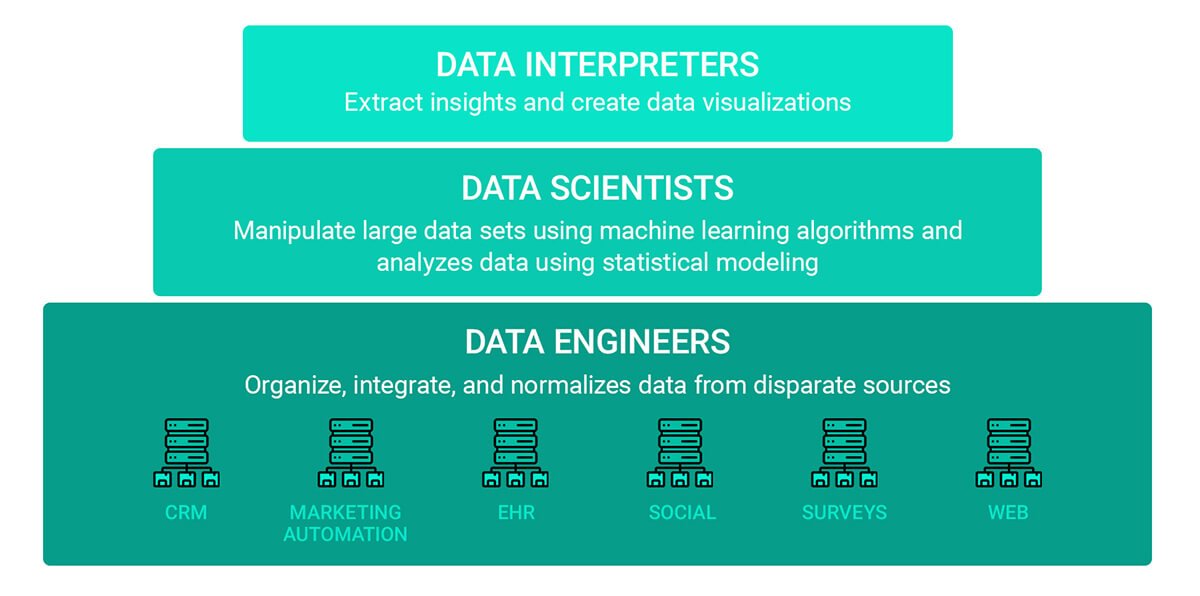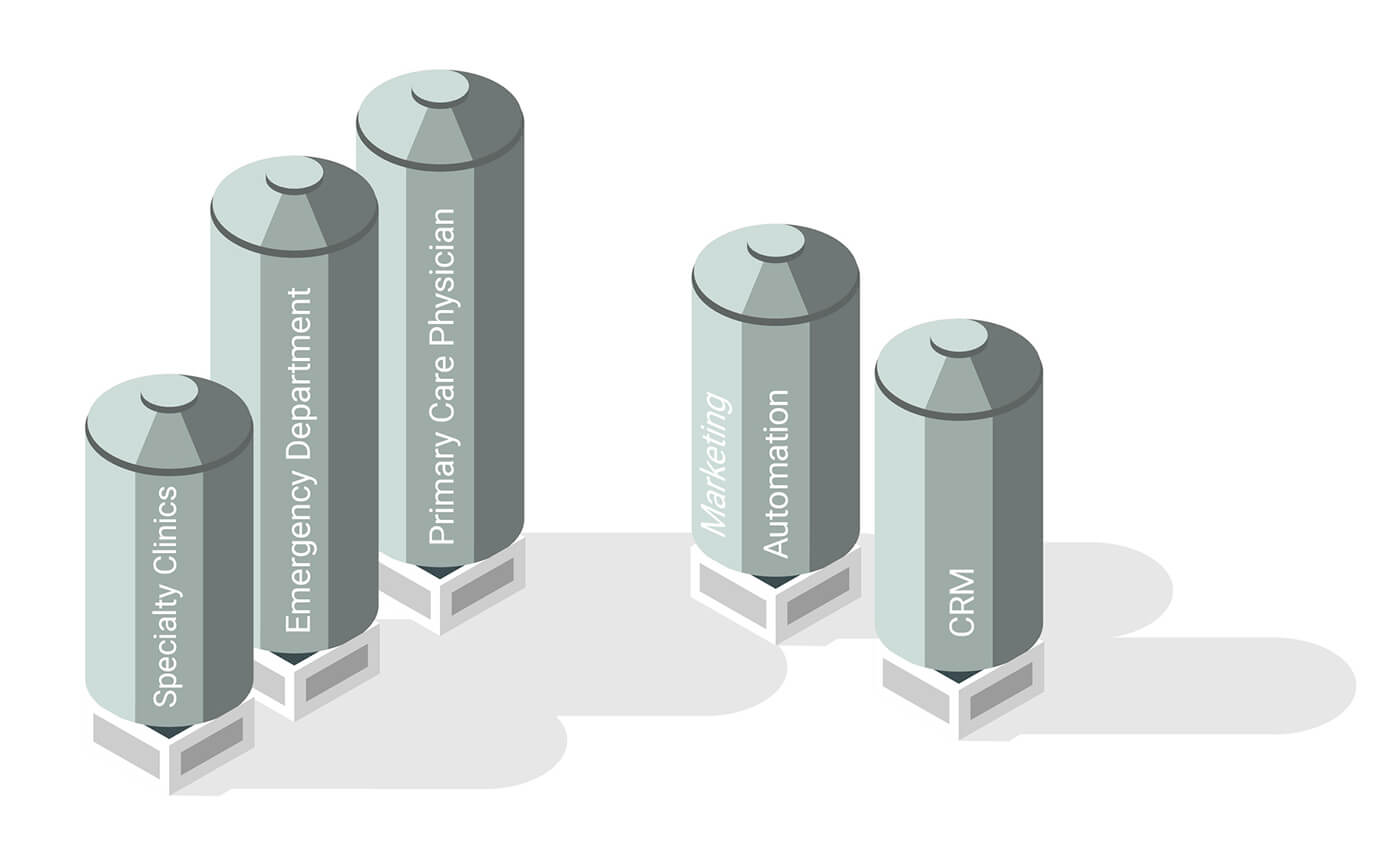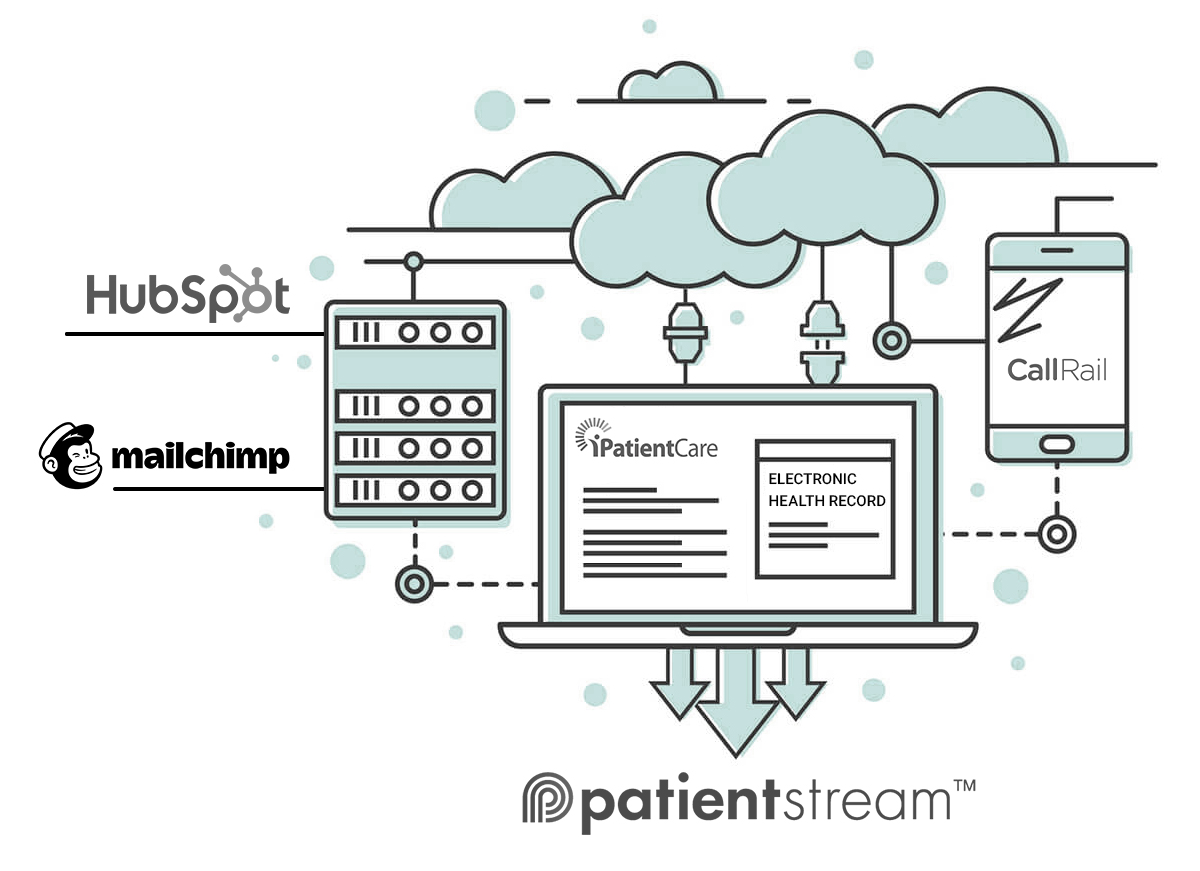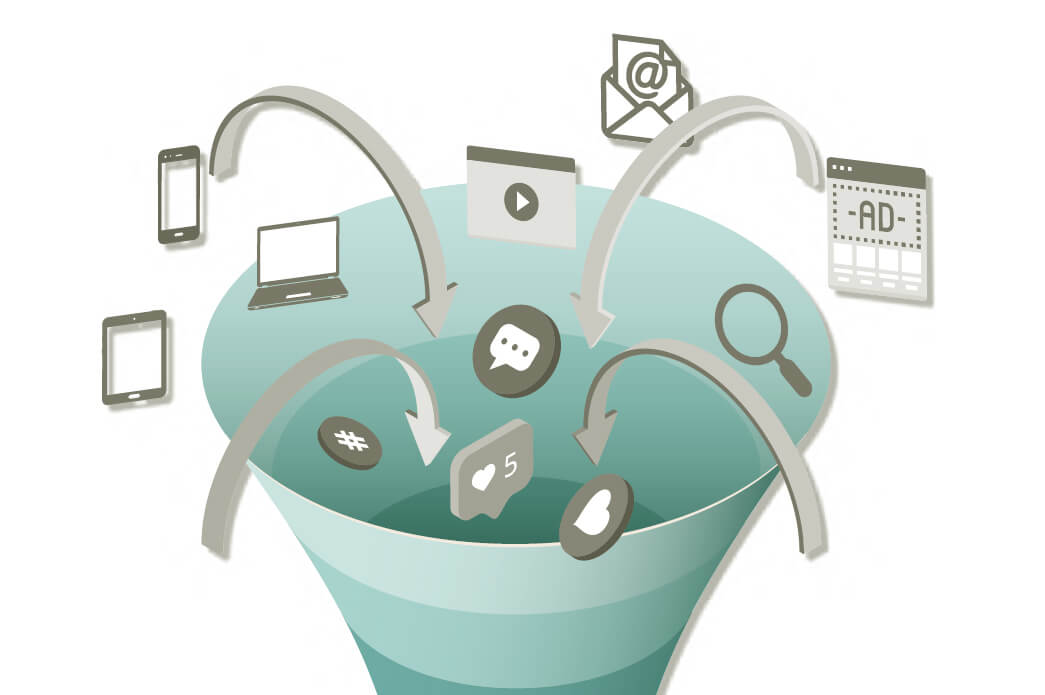There’s no overstating the importance of data. In many ways, it is the currency upon which so much of the healthcare industry is run. The extent to which a medical group can capture, share, and act on data will determine its success. Beyond that, your ability to meet and exceed consumer expectations—to improve the patient experience and quality of care—will depend on your ability to make the most of your data. In this article, you’ll find five strategies you can use today to take back control of your data.
Table of Contents
- Strategy 1: Build a Foundational Marketing Analytics Team
- Strategy 2: Eliminate Organizational Silos
- Strategy 3: Leverage APIs to Accelerate Digital Transformation
- Strategy 4: Listen to Your Stakeholders (that Includes Patients)
- Strategy 5: Understand the Marketing Strategies that Drive Growth
- Important Considerations When Taking Control of Your Own Data
Often, it’s not procuring the data that is a problem but managing it and deriving actionable insights. Within the healthcare industry, we’ve found that big data doesn’t always equal smart data. This is especially true of multi-site healthcare groups, where the abundance of data tends to create problems.
To help your organization or portfolio company strategize how to harness and use data to fuel growth, we’ve compiled a comprehensive guide to healthcare data management. Let’s dig in.
Strategy 1: Build a Foundational Marketing Analytics Team
Marketers within most healthcare organizations have access to an incredible amount of data. This is common. Less common are mature data management strategies that help these marketers accurately identify, measure, and act on KPIs.
Because data for the sake of data isn’t much help, there’s a growing demand for data acquisition specialists, scientists, analysts, and interpreters within healthcare marketing teams. Members of this team must be able to analyze data findings and relate them to strategic objectives and then communicate those insights to executives.

Beyond personnel, data analysis itself should now be built into marketing plans to ensure that they more closely align with real-time consumer needs. This means a close connection between an organization’s operational model, goals, and data stack.
In practice, this can look like closer alignment between campaigns and practice capacity. For example, if a practice is at max capacity, you’ll want to shift the marketing budget and campaigns to other locations that have a need for new patients. Instead of patients being told they must wait months for an appointment, they’re connected to the location that can serve them soonest.
The most savvy, forward-thinking medical groups are aligning their strategies quite closely—and quite intentionally—with their data.
Strategy 2: Eliminate Organizational Silos
Too often, we find that various marketing functions are decentralized across various departments and locations within a healthcare organization. While these kinds of “silos” can easily become accepted as status quo, they present real hindrances to data sharing and overall growth. These include:
- Incomplete, inefficient, or non-existing communication channels between various teams
- Inability to disseminate data insights and collaborate on “big” ideas
- Lack of alignment around broader organizational strategies, including competing interests
- Patchwork patient management and data systems scattered across various locations, creating inaccuracies, incongruencies, and incomplete data

Organizational silos represent a systemic issue with consequences that extend beyond just data management. Patients are impacted, too, as these disparate systems make it difficult for providers to identify health-related patterns, track trends, and communicate information to patients with continuity. All of this ultimately translates to degraded quality of care.
Our tips?
- Tear down silos and encourage collaboration across departments
- Structure your marketing program and data platforms around the needs of your healthcare consumer
- Consider how digital tools can connect different operational units, improve communication, and facilitate data transmittance
Learn more about marketing centralization best practices.
Strategy 3: Leverage APIs to Accelerate Digital Transformation
Let’s dig into the technical side of things because the way your organization leverages your technology integrations can make all the difference. Through custom application programming interfaces (API), it’s possible to connect disparate technology systems across your organization, including your sources of data and data management.
Specifically, you might consider strategic APIs to connect your electronic health record (EHR) platform with other tools, such as databases, health tracking apps, customer relationship management (CRM) software, web services, and even marketing automation software. These kinds of connections can enhance your ability to pool and derive value from all sources of data.

Of course, these kinds of integrations and development don’t happen overnight, and they can require considerable resources and budget. One place to start is with what Gartner calls a thorough audit of your marketing technologies and systems.
Most healthcare companies, despite their growing suites of technologies, are surprised to learn that they don’t have a clear, documented understanding of their tech stack, nor what data is available to them (and how). An audit can provide a kind of roadmap, one that helps your organization identify:
- Where you need to drive better technology adoption to boost efficiency across the organization
- Opportunities for strategic data integrations (through APIs) that can bolster and enhance data management
- Which technologies your organization no longer needs and are ready to be phased out
Lastly, when integrating marketing platforms, you must protect patient health information (PHI) to remain HIPAA compliant. Learn more about HIPAA marketing best practices here.
Strategy 4: Listen to Your Stakeholders (that Includes Patients)
Speaking of data, your organizational stakeholders and patients represent one of the richest sources you have. The question is, are you listening to what these important people are telling you?
Along each “journey” or essential process at your medical practice, there are key stakeholders that have insights that can improve the delivery of care and, in doing so, impact your bottom line. These are the “people doing the work,” and their experiences, friction points, and frustrations should not be overlooked.
Consider this: a physician survey by Deloitte reported that many physicians feel as if they’re not part of the EHR solution. These physicians reported feeling like they were just “passive participants in EHR optimization efforts.”

What a lost opportunity!
Physicians, nurses, and other frontline staff members can provide critical insights that would improve data collection efficiency and quality. Their adoption of technologies like EHR solutions is crucial, yet it will be difficult to achieve if you don’t listen to their feedback.
In the same Deloitte survey, 58% of physicians said there is room for improvement in clinical documentation. They complained of having to manually enter data from hand-written forms (versus having the patient enter the data through an integrated technology). Again, this stakeholder feedback can help organizations consider new ways to improve clinical documentation and unlock the critical insights hidden in physicians’ notes, reports, and other narrative documents.
Finally, and most importantly, listen to the patient. Successful healthcare organizations always have a patient-first mindset. Use technology to capture their feedback and seek ways to integrate it with marketing systems—center the patient when developing new marketing strategies, especially as they relate to data acquisition, management, and insights.
Strategy 5: Understand the Marketing Strategies that Drive Growth
Growth-oriented strategies are usually data-driven strategies. At their core, these strategies are centered around evaluating your marketing strategy and identifying where data could be used—or better used—to enable and realize growth opportunities.
Here are a few ways to go about that:
Maximize advertising ROI using capacity data
One strategy for improving marketing ROI is to use capacity data in your media planning to maximize every cent of your advertising budget. Instead of spending the same budget for every location, adjust your budget based on practice capacity limits. If a provider is booked solid for the next three months, stop ads that send patients to that location. It wastes your ad dollars, as the patient likely won’t wait for an appointment. You’ll see better conversion rates if you send them to another nearby location accepting patients.
We recommend you analyze each location’s performance to determine where to allocate more or less advertising dollars. Determine the:
- locations with low patient volume;
- new practices opening that require special attention;
- locations with maxed capacity or long wait times.
By understanding the capacity challenges and goals at each location and your customer acquisition costs targets, you can strategically allocate marketing dollars to optimize your spend allocation.
Implement end-to-end marketing measurement
Yet another benefit of connecting your technology systems, platforms, and data sources is the ability to attribute leads more accurately.
Lead attribution helps you understand where new patients come from. Organic website traffic? Social media advertising campaigns? With this data, you can get quite serious and efficient about where you direct your marketing spend.

For a long time, so-called “last click” attribution models have been the norm, but we’ve found that these models don’t tell the complete story. Instead, we recommend more sophisticated lead attribution models.
Multi-touch attribution models, in which you can assign partial conversion credit to a variety of marketing channels and touchpoints. While the healthcare patient journey is more complex, it’s still possible to develop a better attribution model that helps you understand the effectiveness of various marketing activities. As system integrations increase, healthcare marketers should explore how they can adopt similar models.
Accurate and reliable lead attribution data is not always easy. It requires that your marketing analytics software is connected to your CRM or patient management system, Google Analytics, PPC advertising platform, and marketing automation software. Working with an agency well-versed in building integrated HIPAA-compliant tech stacks can help remove the headache by seamlessly connecting all these systems and managing them from a central interface.
PPC advertising platform, and marketing automation software. Working with an agency well-versed in building integrated HIPAA-compliant tech stacks can help remove the headache by seamlessly connecting all these systems and managing them from a central interface.
Gain deeper insight with call analytics
As the healthcare journey has become more sophisticated, so has call tracking and analytics software. Call tracking software, like CallRail, Invoca, and Liine can provide valuable insights into the patient journey and consumer behavior. By collecting and analyzing phone call data from potential patients, call tracking can help you refine your marketing strategy. It integrates with Google Analytics, Google Ads, and popular marketing automation software systems like Marketo and HubSpot.
You’ll get data about which keywords, for example, are driving phone calls to help you close the loop between PPC campaigns, leads, and new patients. You’ll also uncover the information prospects need and conversion barriers. Are leads asking the same questions repeatedly? Is your online scheduling app difficult to use? Use these insights to refine your website content, messaging, and ads.
Call analytics can also improve intake and operational efficiency by identifying bottlenecks in the patient journey. By analyzing call data, you can uncover operational issues that may be preventing someone from booking an appointment, such as long call wait times or difficulty reaching the right department. Addressing these issues can improve the patient experience, increase patient satisfaction, and ultimately drive growth for your healthcare organization.
Important Considerations When Taking Control of Your Own Data

Let’s start here: if your organization has been grappling with how to derive more value from your data, you’re certainly not alone. Within the healthcare industry, it is common for medical practices—especially larger groups with many different locations under their broader umbrella—to lack suitable strategies around data management.
Yet the goal remains the same: How to harness this data to both propel growth and consistently improve patient outcomes?
As you consider your own data infrastructure, keep the following questions in mind:
Who owns the data and where does it reside?
When conducting your technology audit, map out where data exists and who owns it? Data locations might include:
- Electronic health record (EHR) technology
- Revenue cycle management (RCM) software
- Customer relationship management (CRM) software
- Marketing automation platforms
- Content management systems (CMS)
How are your disparate systems connected?
How do you get the data to the people who need it? What APIs are needed? What vendors need to be involved? And who, finally, interprets the data?
How do you ensure customer privacy is protected?
Compliance cannot be overlooked in any medical practice, especially when it comes to consumer data. The Health Insurance Portability and Accountability Act (HIPAA) and the EU’s General Data Protection Regulation (GDPR) have strict requirements for the use of personally identifiable information (PII). Indeed, data collaboration needs to be approached carefully, and cybersecurity risks should be part of any discussion involving technology integration.
These three high-level questions are good starting points for the data management conversation. A thorough audit centered around your patients first, then your broader marketing objectives can pay massive dividends within the healthcare vertical. Increasingly, it all starts with how we use data.

